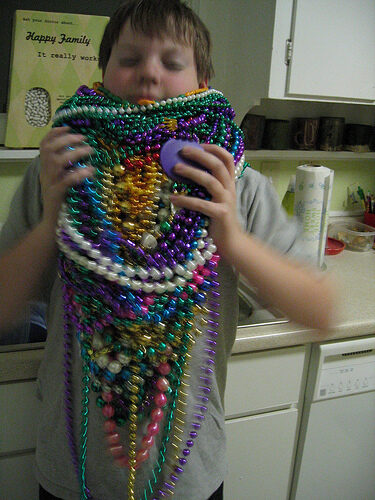My brother died because of ableism. Because people—including very close family—were terrified to face his neurodivergence, and his disability.
Tag: suicide
Yesterday we attended the INSAR 2019 panel Where Do We Go from Here? Learning How to Prevent Suicide in Partnership with Autistic People and Their Allies, led by Sarah Cassidy from Nottingham University who has been doing this for four years now. Here is what the speakers had to say. (Any errors or omissions are on us.) The most important panel of the #INSAR2019 conference, chaired by @Sarah_NottsUni who is leading innovative and potentially life-saving research to understand and help prevent suicide in autistic people. pic.twitter.com/oSoQetMQI5 — Alexandra Forshaw (@myautisticdance) May 3, 2019 More than 10K stakeholders worldwide have identified the top 10 priorities, with equal representation of #autistic people: What increased barriers do autistic people experience when seeking help which may put them at greater risk of dying by suicide? What are the risk and protective factors for suicide in autism across the lifespan? To what extent are autistic people…
[image: Brown book cover. Small yellow text at the top reads, “Zachary Goldman Mysteries 2” Next, the title in white all caps text reads, “His Hands Were Quiet.” Next is an image of a yellow triangle with a silhouette of a person bending backwards and being struck in the chest with a bolt of electricity. Large yellow text at the bottom reads, “PD Workman”.] Maxfield Sparrow His Hands Were Quiet By P.D. Workman Content notes: suicide, abuse, murder, house fires, burn injuries, PTSD, Judge Rotenberg Center, ABA This book review gets all the Autistic trigger warnings. It is a gripping thriller/suspense novel that could help people understand autism and Autistic people better, and it is raw and honest about what some of the most vulnerable Autistic people endure. It will be a tense read for everyone and could be especially triggering for many Autistic people, so proceed carefully with this review and…
[image: Promotional graphic for the movie Killer Caregiver, with a black background, a woman’s face with a malicious expression and a red filter, and bright orange block letters reading, “Killer Caregiver”.] autisticaplanet through1filter.blogspot.com Content note: Some plot spoilers, mentions of violence. Killer Caregiver stands out from the rest of Lifetime Movie Thrillers. First of all, the adults in the movie actually dress and act like believable adults, not petty, spoiled man-boys or woman-girls—though they do live in a McMansion like nearly every Lifetime movie family in the 2000’s through the present. This thriller also differs from the Lifetime norm as the main character Mariah’s son, Jacob, has autism. When a male client makes an unwanted aggressive advance on Mariah (Nicole Hayden), she jumps from her van in an attempt to escape. He then becomes pinned to an entrance gate by the rolling-in-neutral car. He dies and Mariah survives, though she…
Photo © Ivo Dimitrov | Flickr / Creative Commons [image: Illustration of a human brain, in profile, made of colorful cogs in various sizes and shapes.] Maxfield Sparrow unstrangemind.com [Content note: This post discusses suicidality, mental health, and death.] In the early 1990s, I was engaged to a man with epilepsy. He had tonic-clonic seizures and he was a big guy, so I was always alert to the possibility of an episode. I knew there were stores we couldn’t shop in, and roads I couldn’t drive down. I caught his body and lowered him safely to the ground more times than I can remember. I guarded him from the pressing crowd of curious onlookers when he came around after a public seizure. And I worried, feeling helpless, when his medication levels were off, and he had seizure after seizure. I can’t know what it is like to have epilepsy or…
Sarah Cassidy’s INSAR 2018 SIG on autism and suicidality brought ~60 autistic people and autism researchers and professionals to discuss research on, and factors underlying and mitigating, suicidality in autistic people—as well as next steps for researchers. The statements and images below are from our original Twitter Moment compilation/report on this SIG. We then heard back that Twitter feeds can be difficult to parse and access for some, so we’ve created this version as well, edited for readability. Uncredited statements are from the Thinking Person’s Guide to Autism Twitter feed. —- Jon Spiers: Morning session on suicide and autism starting now at INSAR 2018 – a top priority for Autistica and Mental Health in Autism. At INSAR 2014, Sarah Cassidy was the only poster on suicidality. Now there is an entire INSAR 2018 track on autism, suicidality, and bullying. At IMFAR (INSAR) 2016, the SIG goal was to identify priority topic areas.…
The sad truth is that so many Autistic people, children and adults, go through autistic burnout with zero comprehension of what is happening to them, and with zero support from their friends and families.
The next time you are tempted to tell an Autistic person their interest is silly, trivial, a waste of time, weird, or pointless, stop—and remember why we love what we love. We are somebody, too, and we must be respected, protected, and never rejected.
M. Kelter theinvisiblestrings.com Photo by Boudewijn Berends, used under a Creative Commons license [image: head and shoulders of a person wearing glasses backlit by partially-lighted fog and clouds.] When it comes to online discussions about autism issues, I regularly interact with two realms. The first realm is one we’re all familiar with: the day-to-day articles and conversations and debates that take place regarding a wide range of spectrum issues. Causation, research, personal stories, opinions … just the usual autism topics that you come across as you scroll around blogs, and Twitter, and Facebook. The second realm consists of an invisible community. It’s made up of people who are absorbing every discussion, every debate, every article … yet they are not participating, not sharing their own ideas. They’re just there, quietly and attentively taking it all in. This second group is made up of suicidal autistics. This is not just an…
TPGA is observing Autism Acceptance Month by featuring accounts from autistic people about the differences accommodations (or lack thereof) make in their lives. Today, John Elder Robison talks about why accommodation is important, yet may not be enough to help autistic people like him with co-occuring conditions such as anxiety. John Elder Robison jerobison.blogspot.com With April being Autism month, the folks at TPGA asked me to write about accommodations. How about anxiety, Shannon asked? Foolishly, I agreed. After thinking about the topic for hours, till smoke dribbled from my ears, I cannot conceive of any accommodation I could request around my anxiety. Photo © John Elder Robison [Image: Close up of water running over a rock in a stream.] For me, anxiety is one of the most disabling aspects of autism, and it’s with me — at least at a low level — most all the time. I am almost…







